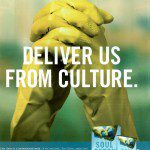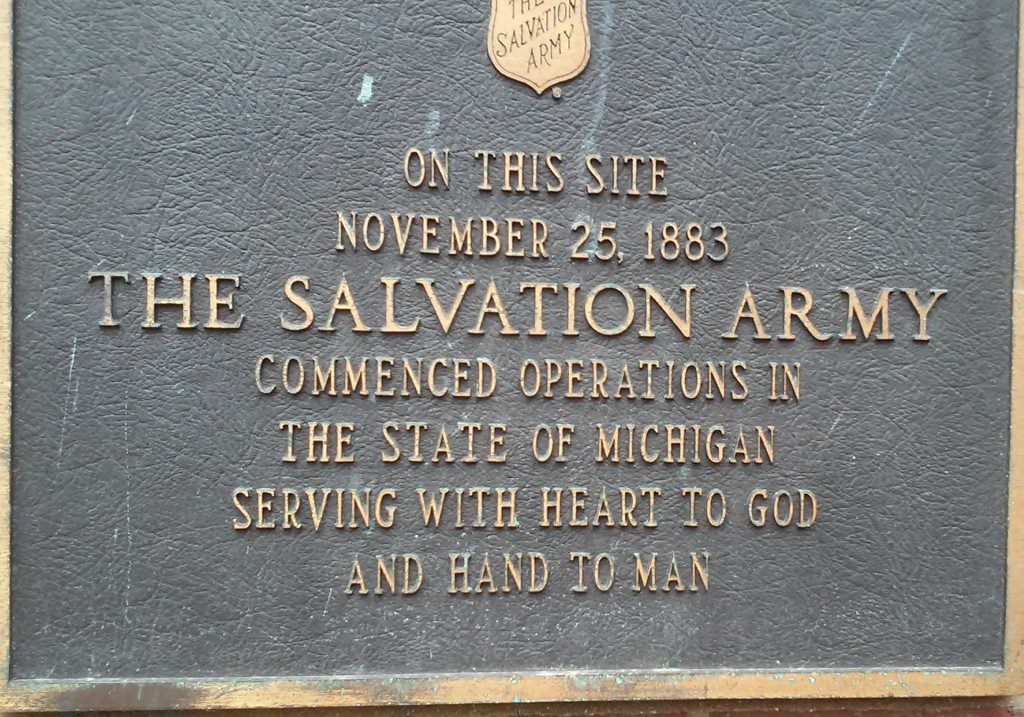Redeeming Work Twin Cities was full of pleasant surprises for me. For one thing, I’m a longtime fan of Ken Myers, founder/interviewer at Mars Hill Audio Journal. So I perked up when Andy Crouch used Ken’s concise definition of culture:
“What human beings make of the world—in both senses.”

The two senses, explained Andy, are these:
First, culture is simply the things we make – material – chairs, furniture, pews, clothing, projectors, microphones, interstate highways. Even speech is an act of culture-making. And though we don’t usually think about it, that’s actually material too: we use the resources of our lungs, larynx, making sound waves, which are hitting your ears. It is physics. It is making stuff.
But culture is not just stuff. It is also the second sense of “make of” – the meaning we make. Culture is the fruit of the human quest for meaning in the world. It comes out of an innate human sense that the world has meaning latent within it. This is not just a neutral sense. Studies of early cognition in children show that they impute meaning even where we adults don’t see any. We come into the world primed to find meaning in it.
Further, said Andy, these two dimensions of culture always interact: The stuff we make must make sense, and the sense we make must issue in stuff. It’s the incarnational principle.
Clothing is this way. It is stuff. If all we needed was something to insulate ourselves from our environment or to cover up our vulnerability with other humans, we could all show up in sheets – like the monks in the early Apple ads: plain, gray, boring. This would fulfil the functions of clothing. Instead, we get up in mornings and “adorn” ourselves – we put on clothes that have un-useful qualities. Checks on a shirt, for instance—what function do they serve? Or why pick cuffed rather than uncuffed jeans. There is no function – it only signifies, said Andy, that “I’m 46 and wish I was 26.” (Laughter.)
The point is that each of us got up this morning and made different choices about what we put on. Really, even choosing not to choose has a meaning. So the material things we use—they’re never “just stuff.” They always involve some sense we’re making of the world.
What does that mean? It means that as church leaders we must care about culture. Culture is the arena in which we try to structure and make sense of our lives and our world.
Up on the screen, it’s Catherine, Andy’s wife, in her lab. She’s an experimental physicist. Behind her is a laser table that she works at, a very complex, expensive device. Lasers bounce around through lenses, do things, Andy says “I’m not qualified to explain”: they bombard a little piece of silicon or semiconductor, and amazing things happen, which you study under a microscope.
It’s very material, what Catherine does with her research. But it’s also full of meaning. You can do math with it – it becomes a way we think about meaning, just as truly as we do through poetry, philosophy. Through manipulating this physical “stuff” you can come up with imaginary systems of structuring reality.
And crazily, these systems actually map onto physical reality. It’s as if the world were designed for the sense makers and stuff makers to discover: it is elegant, beautiful, responsive to human inquiry.
Why would the world have to be like this? It doesn’t. The world waited for billions of years of the universe’s history, and finally these creatures come along who live to make something of the world. And the world has elegant, beautiful meaning. Even Catherine’s secular colleagues find themselves experiencing wonder.
Stanford theoretical physicist Andrei Linde will likely get Nobel prize – on the internet there’s a video of him finding out that an important theory he originated has been verified. After 30 years of waiting, it’s confirmed. Amazing moment. He and his physicist wife are almost in tears. “All along,” he says, “I wondered if I’d been tricked into liking this theory just because it is beautiful.” No, Andrei, you weren’t tricked. The world is beautiful. And you were made in order that you could discover this. The world has meaning and material, and humans fuse them in ways no other creature does.
Great story, I think—but what does it have to do with faith and work? Only this:
One more thing about Catherine, says Andy. She has done this work as university professor for 11 years. She and I have been faithful attenders to our church that has served our family well. But at almost no time in the 11 years in that congregation has anything from the pulpit, any sermon spoken to what she spends her days doing.
While writing Culture Making for four years, Andy listened to what was spoken from the pulpit, listened carefully for who was held up as examples, models of faithfulness, discipleship, engagement with the world.
Almost every example was a professional Christian:
ministers,
missionaries,
church professionals.
Never was there a single anecdote on our working lives. Why? Why no stories about culture makers told from our pulpits?
Because we are missing chapters of our Bible. The functional Bibles of many Christians re culture in work are missing some chapters. (And that’ll be the subject of our next post from Redeeming Work Twin Cities.)
Image: Pixabay.














